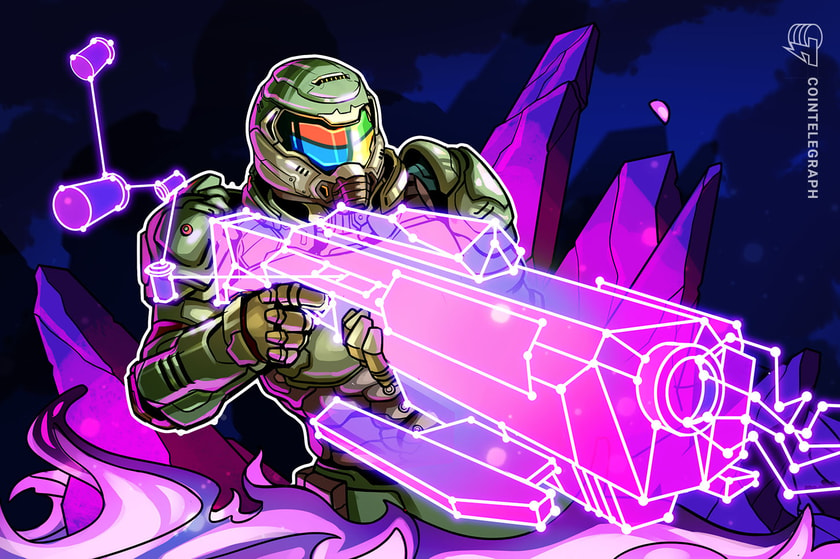
More signs say the acquisition will boost metaverse applications in business than in gaming as CEO Nadella talks about productivity and metaverse enthusiast Kotick leaves Activision.
A lot was said about the metaverse when the Microsoft deal to acquire Activision Blizzard was announced in January 2022. The attention mainly was on business communications, rather than gaming. If public statements and leaked documents are any guide, the Activision deal could promise more for the future of crypto than the metaverse.
The metaverse had high visibility in Microsoft’s announcement of its deal for Activision in January 2002. “This acquisition will accelerate the growth in Microsoft’s gaming business […] and will provide building blocks for the metaverse,” Microsoft said in the first paragraph. Microsoft CEO Satya Nadella said, “Gaming […] will play a key role in the development of metaverse platforms” a few paragraphs later.
Nadella elaborated on his vision for metaverse development in an interview the following month. Nadella told the Financial Times:
“We are building, quite frankly, metaverse applications, if I could call them that. Or experiences in business applications, in productivity tools, and meetings and games — all three on a common platform.”
Nadella’s emphasis on work is telling. He listed four things and referred to them as “all three” – apparently “meetings and games” count as one. Microsoft’s metaverse platform, Mesh, which began previews this month, is positioned as a complement to its Teams business communications platform.
Mesh contains a gaming component too. While promising “you will transform your two-dimensional (2D) meeting into a 3D immersive experience,” it added:
“Play built-in interactive games for team bonding within immersive spaces. To get started, you can see a few designated areas to roast marshmallows, throw beanbags, answer fun icebreaker questions, and more.”
The metaverse went unmentioned in the Microsoft Gaming statements at the beginning and completion of the deal on Oct. 13, and Microsoft Gaming CEO Phil Spencer made it clear later in 2022 that his enthusiasm for it was weaker.
Related: FTC opposes Microsoft’s metaverse-focused Activision Blizzard purchase
Spencer questioned what the metaverse even is in an interview with Bloomberg in August. “My view on Metaverse is that gamers have been in the Metaverse for 30 years,” he said. He said little about the Web3 metaverse except that he was “cautious” about play-to-earn. He was later quoted as calling the metaverse "a poorly built videogame” and saying "Building a metaverse that looks like a meeting room, I just find that's not where I want to spend most of my time."
Today is a good day to play. We officially welcome Activision Blizzard King to Team Xbox. Together, we’ll create stories and experiences that bring players together, in a culture empowering everyone to do their best work and celebrate diverse perspectives. https://t.co/KBCESknYYh https://t.co/jTHOeH48Wx
— Phil Spencer (@XboxP3) October 13, 2023
Activision CEO Bobby Kotick is enthusiastic about the metaverse. He said in 2021, “We're going to get to a place where that original vision that Neil Stephenson had in Snow Crash or what you see in [Ernest Cline’s] Ready Player One is going to start to materialize as something that is very real."
In an interview on CNBC on the day the Activision deal was announced, Kotick and Spencer appeared together on CNBC. Kotick said, “We’re beginning to see what the metaverse will be like, and in that race for the metaverse, it started to become apparent that there were a variety of resources and talent that we needed,” Kotick said. Spencer did not mention the metaverse.
Kotick will remain with Activision through the end of the year.
Spencer may be more bullish on cryptocurrency, however. Leaked internal documents reportedly revealed that Microsoft planned to integrate crypto wallets into Xbox. Spencer downplayed the leak, saying “so much has changed,” but did not deny any of the information. If the plans to incorporate crypto have not changed, they could potentially be expanded throughout the new Microsoft games holdings.
Magazine: Minecraft bans Bitcoin P2E, iPhone 15 & crypto gaming, Formula E: Web3 Gamer















